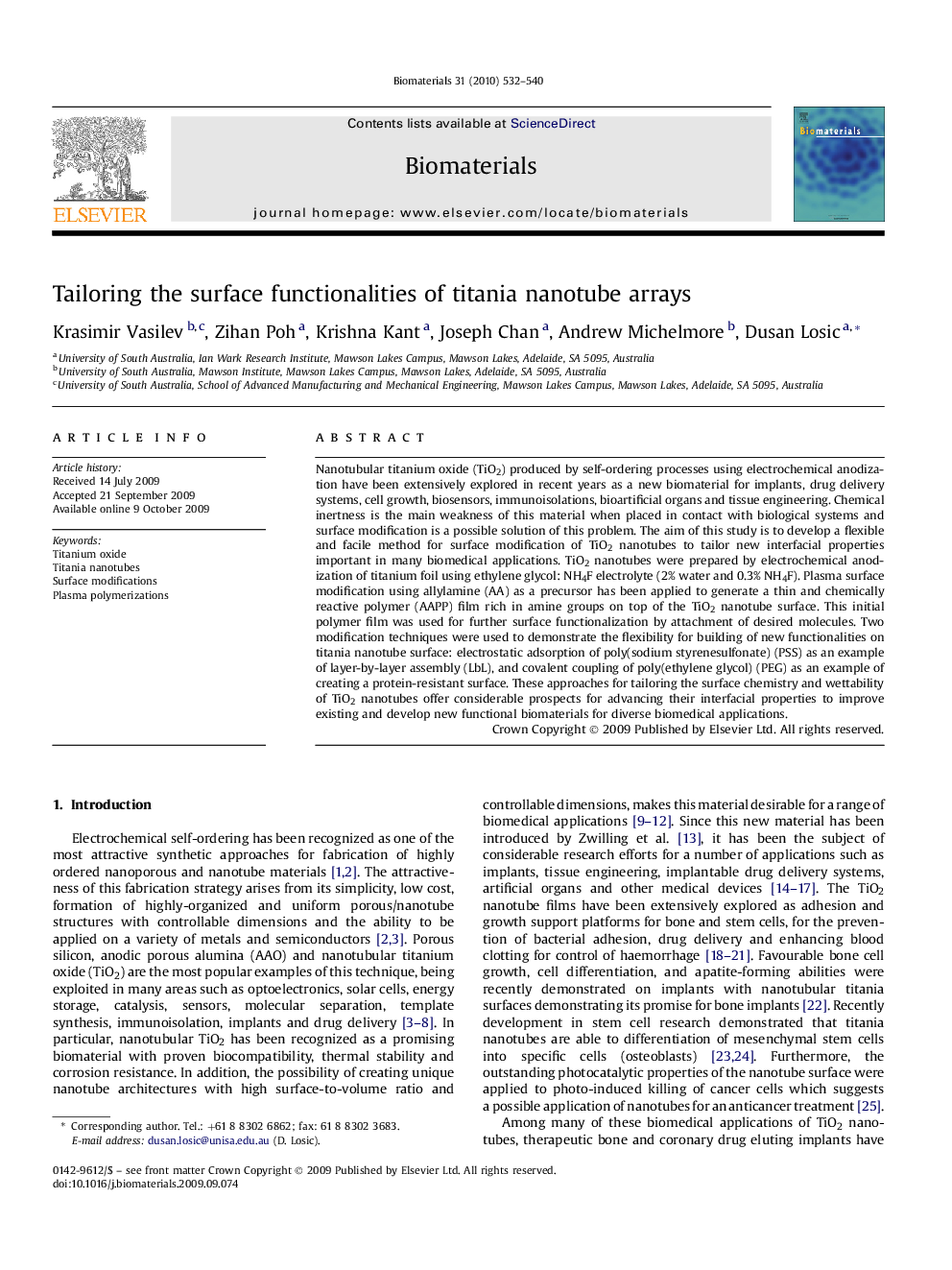| Article ID | Journal | Published Year | Pages | File Type |
|---|---|---|---|---|
| 8514 | Biomaterials | 2010 | 9 Pages |
Nanotubular titanium oxide (TiO2) produced by self-ordering processes using electrochemical anodization have been extensively explored in recent years as a new biomaterial for implants, drug delivery systems, cell growth, biosensors, immunoisolations, bioartificial organs and tissue engineering. Chemical inertness is the main weakness of this material when placed in contact with biological systems and surface modification is a possible solution of this problem. The aim of this study is to develop a flexible and facile method for surface modification of TiO2 nanotubes to tailor new interfacial properties important in many biomedical applications. TiO2 nanotubes were prepared by electrochemical anodization of titanium foil using ethylene glycol: NH4F electrolyte (2% water and 0.3% NH4F). Plasma surface modification using allylamine (AA) as a precursor has been applied to generate a thin and chemically reactive polymer (AAPP) film rich in amine groups on top of the TiO2 nanotube surface. This initial polymer film was used for further surface functionalization by attachment of desired molecules. Two modification techniques were used to demonstrate the flexibility for building of new functionalities on titania nanotube surface: electrostatic adsorption of poly(sodium styrenesulfonate) (PSS) as an example of layer-by-layer assembly (LbL), and covalent coupling of poly(ethylene glycol) (PEG) as an example of creating a protein-resistant surface. These approaches for tailoring the surface chemistry and wettability of TiO2 nanotubes offer considerable prospects for advancing their interfacial properties to improve existing and develop new functional biomaterials for diverse biomedical applications.
